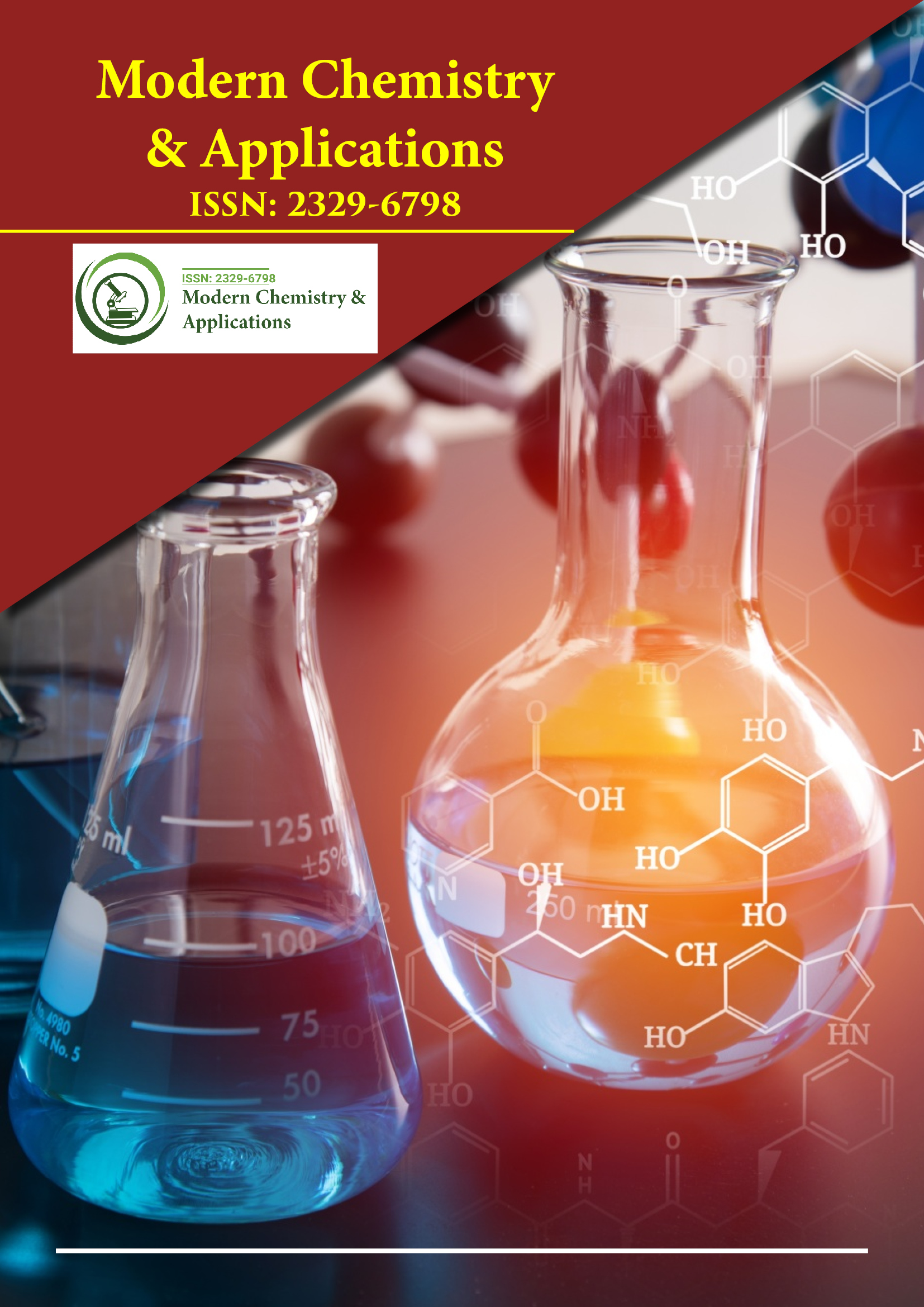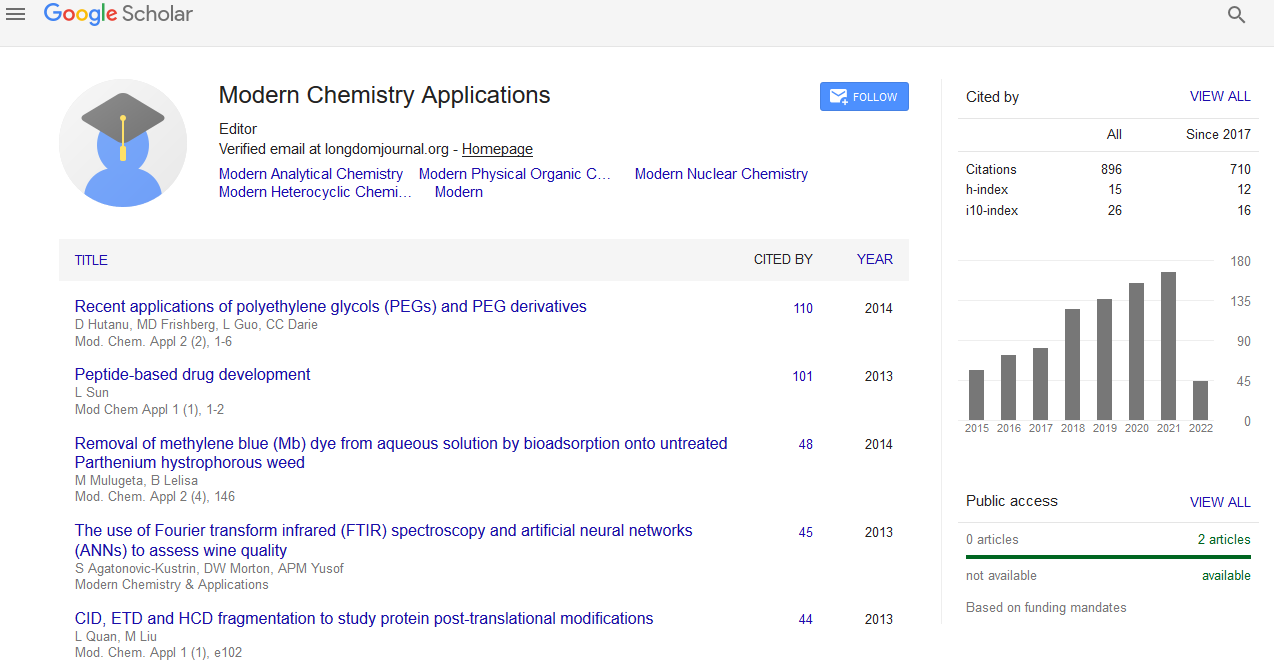Indexed In
- Open J Gate
- JournalTOCs
- RefSeek
- Hamdard University
- EBSCO A-Z
- OCLC- WorldCat
- Scholarsteer
- Publons
- Geneva Foundation for Medical Education and Research
- Google Scholar
Useful Links
Share This Page
Journal Flyer

Open Access Journals
- Agri and Aquaculture
- Biochemistry
- Bioinformatics & Systems Biology
- Business & Management
- Chemistry
- Clinical Sciences
- Engineering
- Food & Nutrition
- General Science
- Genetics & Molecular Biology
- Immunology & Microbiology
- Medical Sciences
- Neuroscience & Psychology
- Nursing & Health Care
- Pharmaceutical Sciences
Abstract
Synthesis, Characterization and Luminescence Studies of Metal-Diimine Complexes
Aziza Sarwar, Mustaffa Bin Shamsuddin and Hendrick Lingtang
Metal complexes have attracted great interest due to their potential application as luminescent materials in organic light emitting diodes (OLED) in the present technological displays. Through systematic study on the variation of ligands, structural and bonding modes of different metal centers, the structure-property relationships of the various classes of luminescent transition metal complexes can be obtained. The present research reports the synthesis and luminescence studies of some metal-diimine complexes. A diimine ligand namely N,Nʹ-bis-(salycylidene)-4,4ʹ-diaminodiphenylether (3a) was prepared through enamination reaction between diaminodiphenylether with salicyldehyde in a 1:2 molar ratio. Subsequently, the corresponding Zn(II) (4a) and Cd(II) (4b) complexes were prepared in the presence of base according to a stoichiometric ratio of metal:ligand:NaOH=1:1:2. The synthesized ligand and all the complexes were characterized by CHN elemental analysis, 1H and 13C NMR, UV-Vis and FTIR spectroscopic data and molar conductivity measurements. The spectroscopic data suggested that the ligands acted as N2O2-tetradentate, coordinating to the metal atom through both the azomethine N atoms and hydroxyl O atoms. The fluorescence properties of the synthesized metal complexes were investigated. The metal- diimine complexes displayed emission bands centered in the range of 465-490 nm with higher luminescence intensity due to ligand metal-metal charge transfer transitions (LMCT). The relatively large Stoke’s shift observed probably indicates that the energy absorbed by the organic ligands was transferred efficiently to the metal ions and merits them to be used as promising emitters in OLED.


